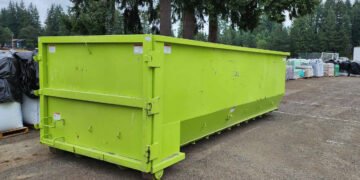When you’re transitioning from a life of renting to a life of homeownership, you may find that owning a home comes with a steep learning curve. For example, did you know that you should set aside 1% of your home’s purchase price for emergency maintenance services?
You may also be wondering what kinds of maintenance issues you can take care of yourself and which require professional help. We’re here to help.
Today, we’re going to talk about some of the most common home plumbing problems homeowners can expect to face and how to handle them.
Read on for five common plumbing problems and make the learning curve a little less steep.
1. Dripping Faucet
Chances are, you’re going to deal with a dripping faucet at least once–if not multiple times. When you have a faucet that won’t stop dripping, it’s not just the noise that will get on your nerves. The constant flow of water can lead to a buildup of mold in your sink and, if left unfixed for too long, can take a toll on your water bill.
Most of the time, you can fix a dripping faucet on your own. Faucets that won’t stop dripping usually have a stiff, worn, broken, or loose internal washer.
All you need to do is purchase a replacement washer and grab the proper tools (including an adjustable wrench, an Allen wrench, and a flathead screwdriver). Shut off the water flow to the affected faucet, disassemble the faucet and replace the washer, and reassemble the faucet.
2. Clogged Drain
Clogged drains are also a common issue that homeowners have to deal with. If possible, you’re going to want to avoid using chemicals to clear up the clog–especially if you have older pipes that are susceptible to corrosion. Fortunately, there are other ways that you can try clearing a blockage in your bathroom or kitchen sink that don’t involve chemicals.
Plastic disposable snakes can be purchased online or in home improvement stores. Use a plastic snake to loosen and remove any solids that are blocking your drain. Then, pour a tablespoon of baking soda and a half cup of white vinegar down your drain to help dissolve any remaining substances.
If this doesn’t work, the clog may be deeper in your pipes. At this point, it’s best to call a plumber. Search for “plumbers near me” and find the best plumber in town, like these plumbers Pinellas County has to offer.
3. Clogged Toilet
Like a clogged sink, you can usually handle a clogged toilet on your own. If the toilet is getting close to the dreaded overflow point, turn off the water source that connects directly to the affected toilet. If necessary, lower the water level using pots or buckets.
A snake or plumber are traditional tools that are usually effective in breaking up a toilet clog. However, there are other options that aren’t quite as hands on that may be worth trying if you aren’t in a hurry.
One option is to create a “toilet bomb” (like a bath bomb, but not quite as relaxing) using some ingredients you have at home. In a muffin tin lined with muffin wrappers, combine a cup of dish soap with three tablespoons of baking soda and three tablespoons of vinegar. Allow the toilet bombs to harden overnight before dropping one into your clogged toilet and allowing it to sit and dissolve for several hours.
If DIY methods don’t unclog your toilet, call a plumber for some quick and easy unclogging action.
4. Leaking or Burst Pipes
Unfortunately, homeowners may encounter a few home plumbing emergencies from time to time. One possible emergency that you don’t want to ignore is the leaking or burst pipe.
A pipe with a small but steady leak may not constitute an emergency, but you’re going to want to have it repaired as soon as possible. Water that drips in your home will create mold, which can spread on surfaces and pollute your air, causing a variety of respiratory problems. Like the dripping faucet, you can also expect your water bill to go up if you don’t address a leaking pipe.
If you have a burst pipe, you’re going to need to act fast. Head to your main water shut off valve (located in the basement or on an outdoor utility wall) and cut off the water in your home. Then, call an emergency plumber to have the burst pipe repaired or replaced.
Low Water Pressure
If you notice that your water pressure is getting lower, it’s time to do some investigating. Changes in water pressure can indicate a leaking or broken pipe, a blockage in your pipes, or a simple build-up on an individual faucet.
If you’re noticing a change in water pressure all over the house, call a plumber. The source may be bigger than a DIY project can address.
If the water pressure is only low in one area (e.g. one sink or one shower), the faucet may have a buildup of sediments and minerals. Remove the faucet head and aerator and soak both in a bowl of white vinegar for several hours. If this doesn’t work, you may want to replace the faucet altogether.
Get Prepared for Home Plumbing Problems
New homeowners tend to learn about caring for their properties the hard way. With our guide to home plumbing problems, you can get ahead of the curve and prepare for common plumbing issues before they happen. Remember: sometimes calling a professional is worth the money!
Looking for more homeowner tips? Take a look at our real estate section and find out what’s trending, what’s worth the money, and how you can take care of your property to keep the property value high.






























































